The Zoo turns 30! (A brief history of Gen X in Brisbane)
By Anna Thurgood, Engagement Officer, State Library of Queensland. | 16 December 2022
If you grew up in Brisbane and came of age in the early 1990s, cast your mind back to the summer of ‘92. It was hot, obviously. But also, young people were experiencing impacts from significant changes happening both globally and locally. The AIDS epidemic in the early-1980s had reversed all the gains made by the sexual liberation movement and left kids terrified of sex. And the ‘greed is good’ boom times of the hedonistic ‘80s were about to come to a grinding halt, starting in 1989 with the fall of the Berlin Wall sending shockwaves of instability around the world.
In Australia, economic rationalism under the Hawke-Keating Labor government had begun with the floating of the Australian dollar and deregulation of banks and share markets from 1986. It gathered pace in the latter half of the 1980s with the breakdown of union domination of the labour market, moving away from protectionism to free trade. For young people, cost-cutting saw the end of free higher education with the introduction of HECS debts. And by 1990, Australia was deeply mired in the ‘recession we had to have’ with youth unemployment was at record levels.
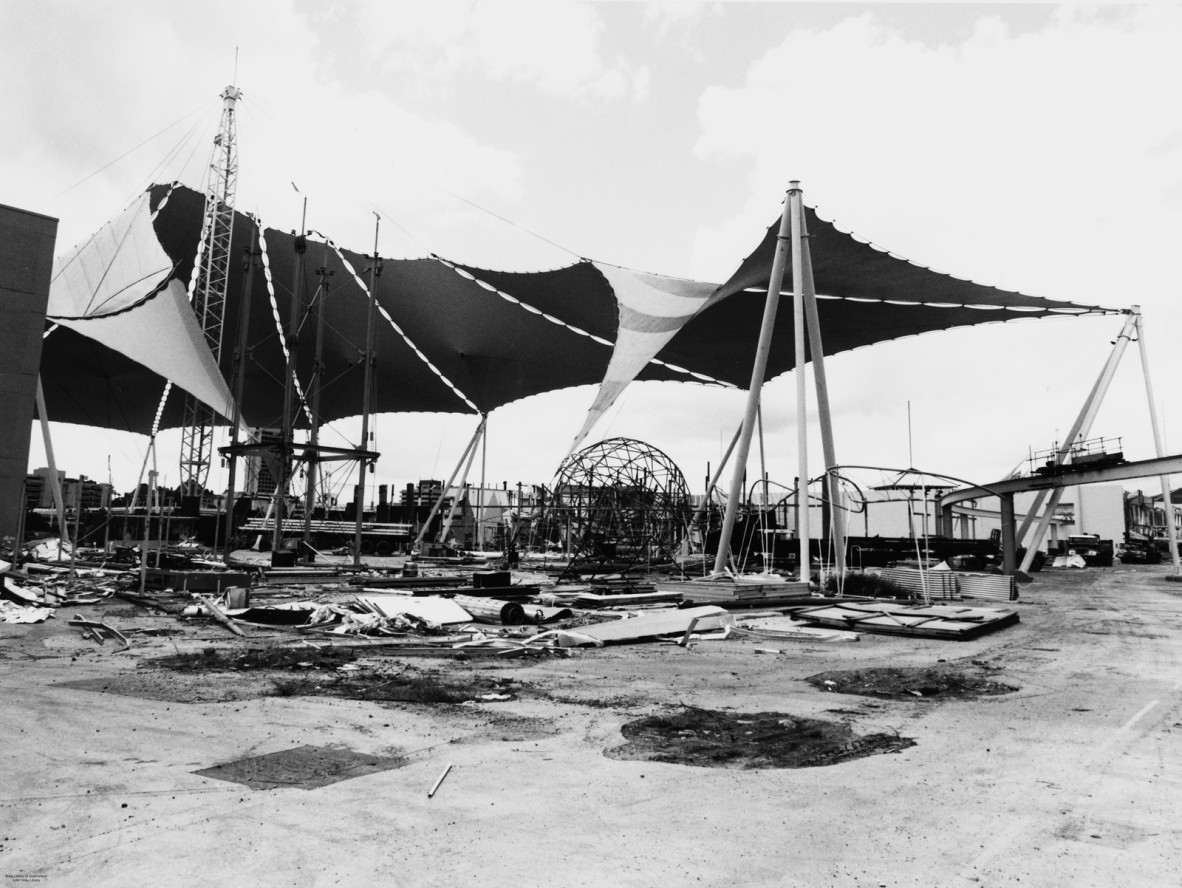
Dismantling the sails at the World Expo '88 site, Brisbane. Photographer: Reina Irmer. 29104 Reina Irmer World Expo 88 Photographs. John Oxley Library, State Library of Queensland. Negative number: 159362
The late 1980s had also brought massive shifts to Brisbane and Queensland, in the form of World Expo ‘88 and the Fitzgerald Inquiry. Both brought about significant changes to the political, social and literal landscape of Brisbane. World Expo changed the face of South Brisbane and introduced a new era of nightlife to the city. While the Fitzgerald Inquiry caused the fall of the longstanding and highly conservative Bjelke-Petersen government, and with it, a rampantly corrupt police force.
Young people in the early 1990s were the first generation of ‘latch-key’ kids, spending long periods without adult supervision as women entered the workforce in droves, either because they wanted to or because they were forced to with the rise of single-parent families. Heroin also washed through Australia and this period would become known as the ‘heroin epidemic’ sweeping up thousands of young people along the way. This new generation, contending with deep social and economic change, was about to be dubbed ‘Generation X’ and lampooned as apathetic ‘slackers’. The fact was, Generation X were very independent, resourceful with a strong DIY ethic and a deep anti-authoritarian streak.
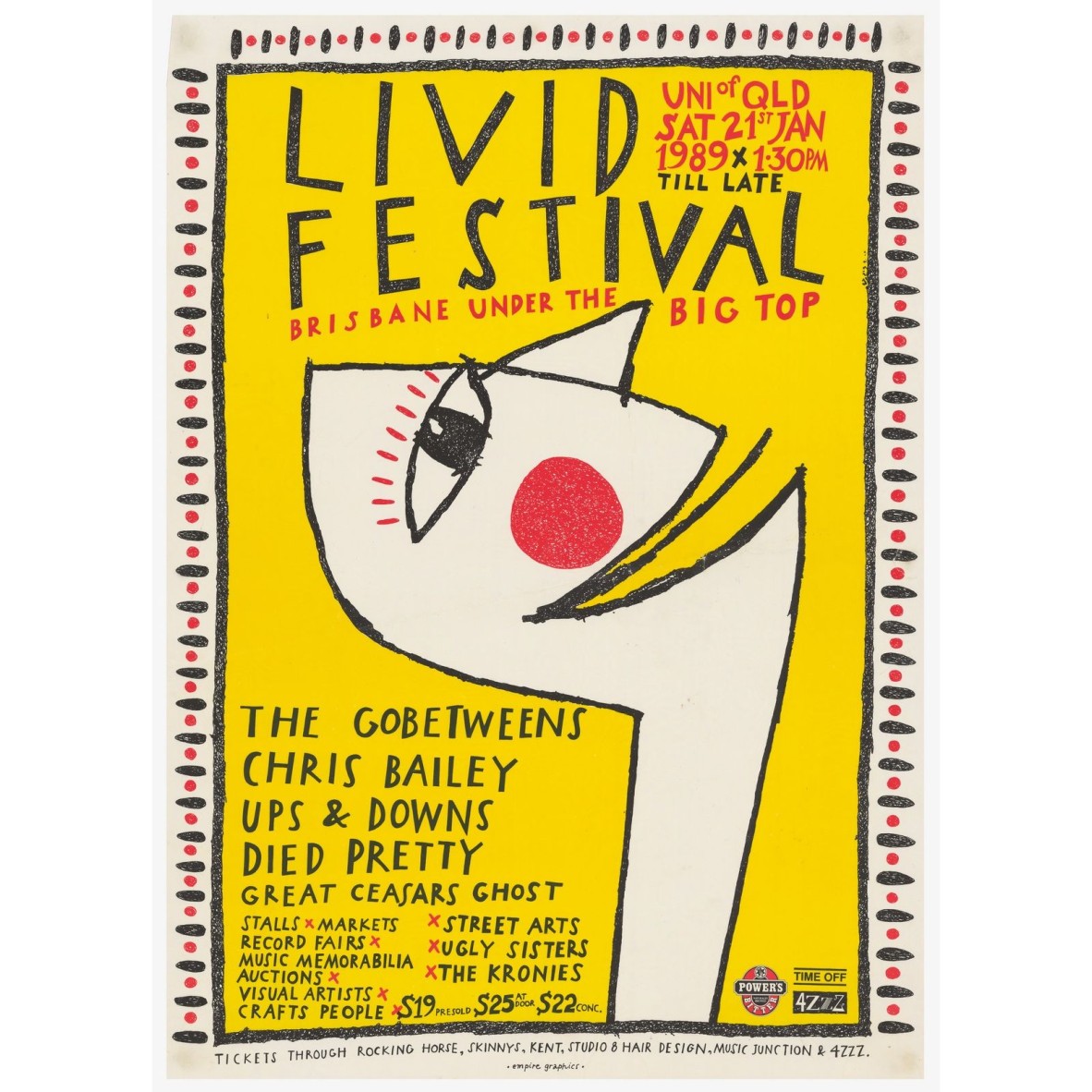
Livid Festival Brisbane under the big top, 1989. Empire Graphics & Livid Festival. John Oxley Library, State Library of Queensland
In the early 1990s, many young people were either studying or unemployed. Sharehousing with mates in the old Queenslanders of inner-city Brisbane, pre-gentrification, was the cheapest option to move out of home. Gen-X identified strongly with film and music, but most especially music. Independent, alternative music was on the rise, globally and locally, and Brisbane’s ‘indie’ music credentials were noteworthy. It was the birthplace of pioneering public radio station 4ZZZ in the mid-1970s, produced famous bands such as The Saints and The Go-Betweens, and a new homegrown arts and music festival, Livid, was launched in 1989. With the alternative scene flourishing, bands were forming and cross-pollinating right across the city and it seemed everyone knew someone who was in a band.
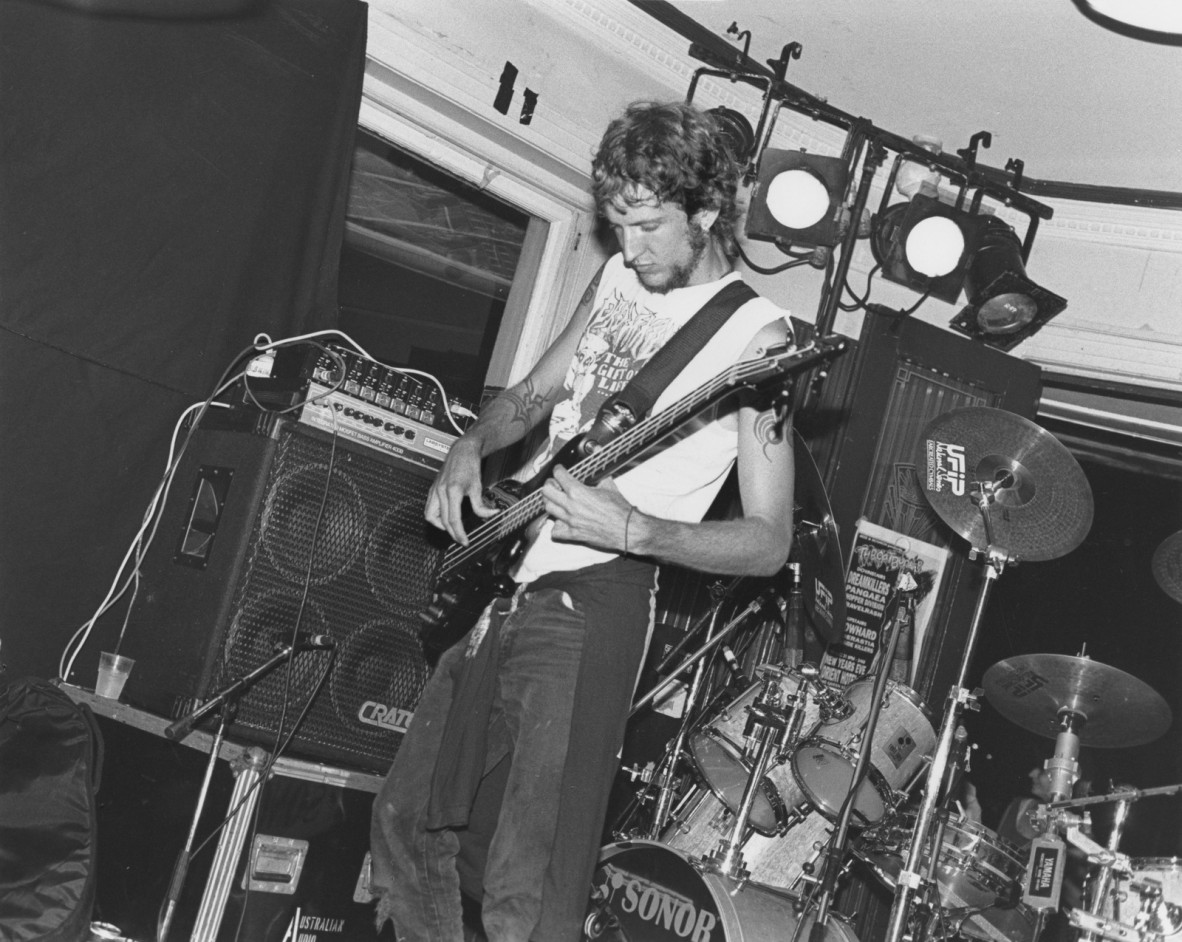
Ben Ely of Pangaea performing at the Hotel Orient in Brisbane, 1993. Photographer: Kathy Dora. 27175 Kathy Dora photographs. John Oxley Library, State Library of Queensland. Image number: 27175-0001-0014
Across Brisbane smaller venues dedicated to staging local bands regularly were few and far between. Apart from a couple of theatres and community halls, rowdy local live music still wasn’t well tolerated in Brisbane in the early 1990s. There was Metropolis and Funkyard, both in the basement of the Myer Centre and both ostensibly nightclubs, and the Orient Hotel up the other end of the city.
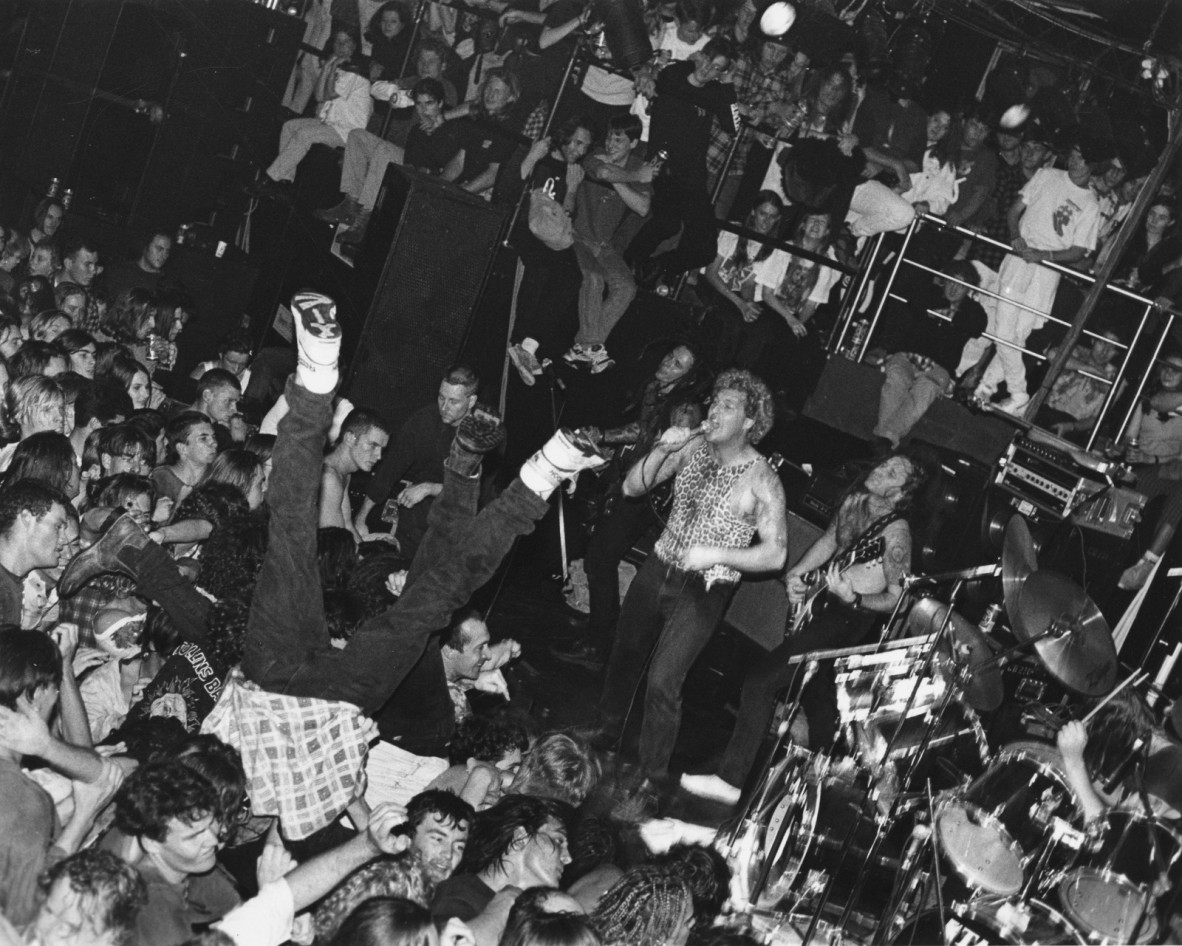
The Dreamkillers performing at the Metropolis in Brisbane 1992. Photographer: Kathy Dora. 27175 Kathy Dora photographs. John Oxley Library, State Library of Queensland. Image number: 27175-0001-0003
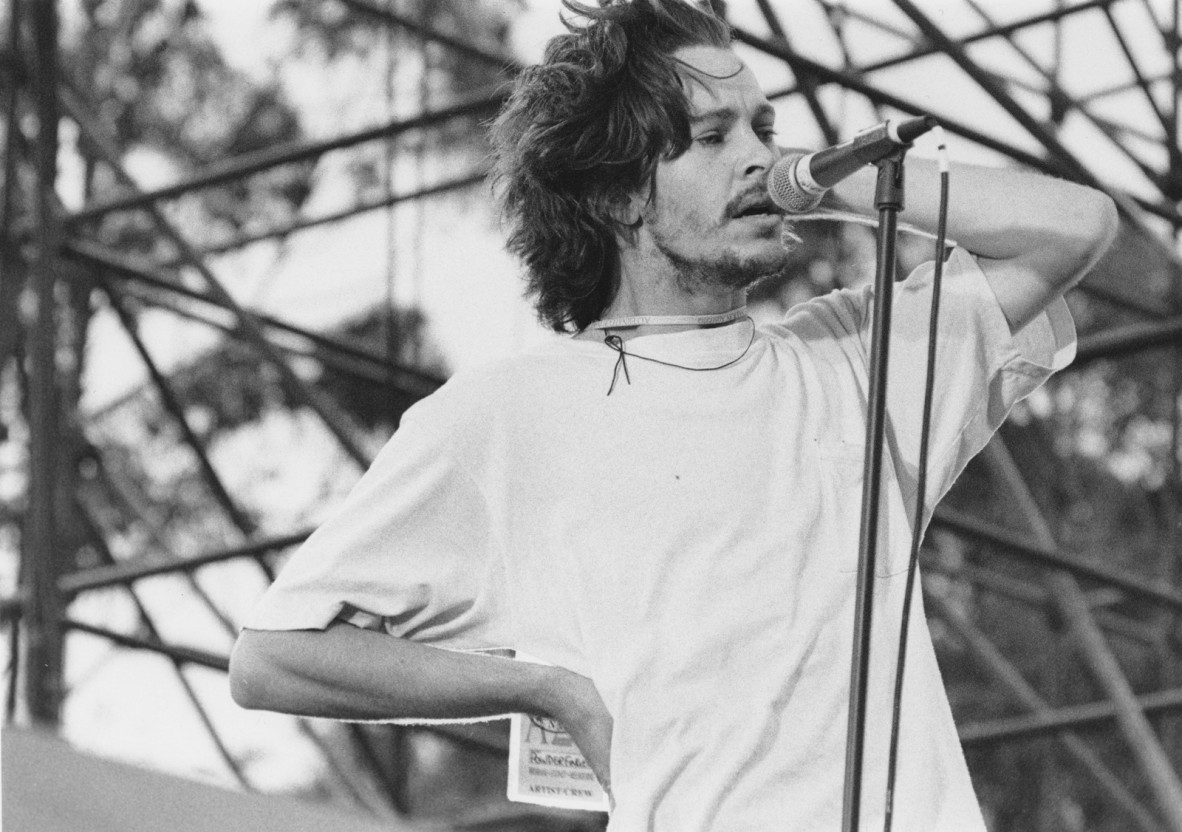
Bernard Fanning of Powderfinger performing at the Alternative Nation music festival at Chandler, 1995. Photographer: Kathy Dora. 27175 Kathy Dora photographs. John Oxley Library, State Library of Queensland. Image number: 27175-0001-0001
The earliest incarnations of Brisbane bands that would go on to become household names played these venues: Powderfinger, Huxley Family and Resin Dogs (Regurgitator) and Custard Gun (Custard). Brisbane didn’t know it at the time, but it was part of a global underground music revolution gathering pace. ‘Grunge’ was about to explode across the world with the release of Nirvana’s second album ‘Nevermind’ in September 1991, taking alternative music into the mainstream.
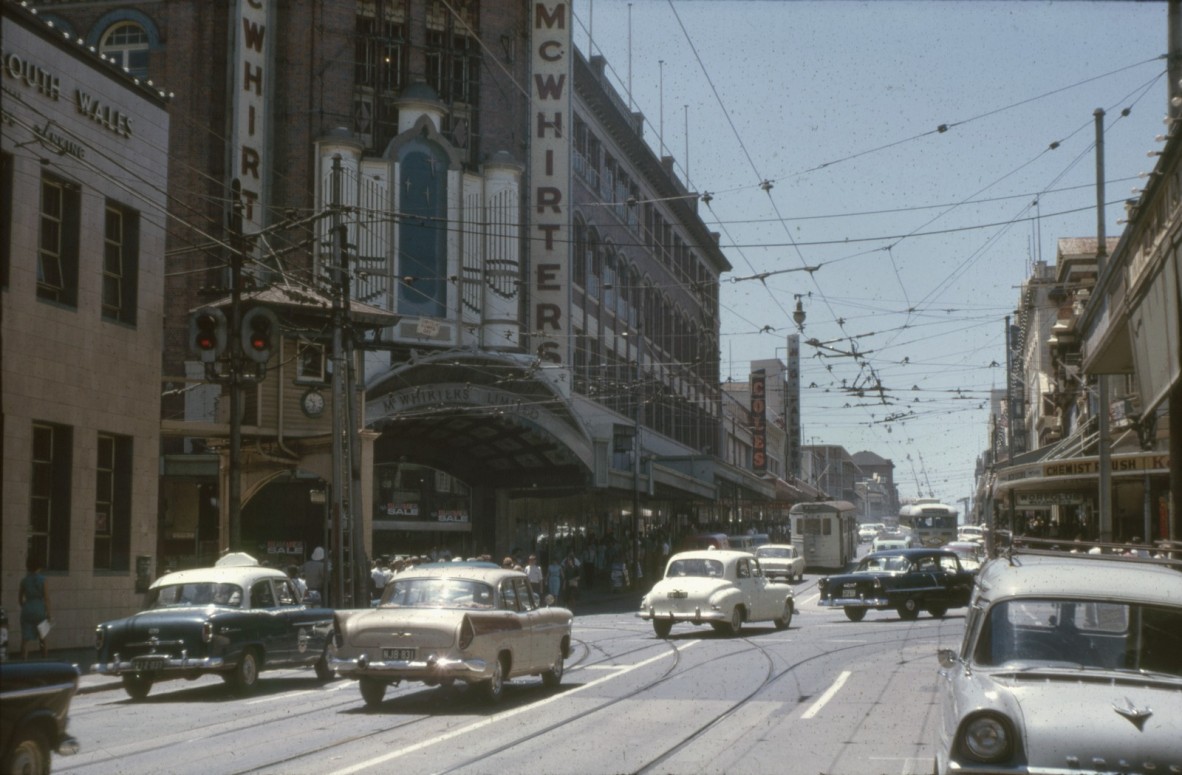
Facade of McWhirters' department store in Fortitude Valley, 1960? Photographer: A. Wooley. 6668 Leslie Albert Woolley Collection of Slides. John Oxley Library, State Library of Queensland. Image number: 6668-0001-0012
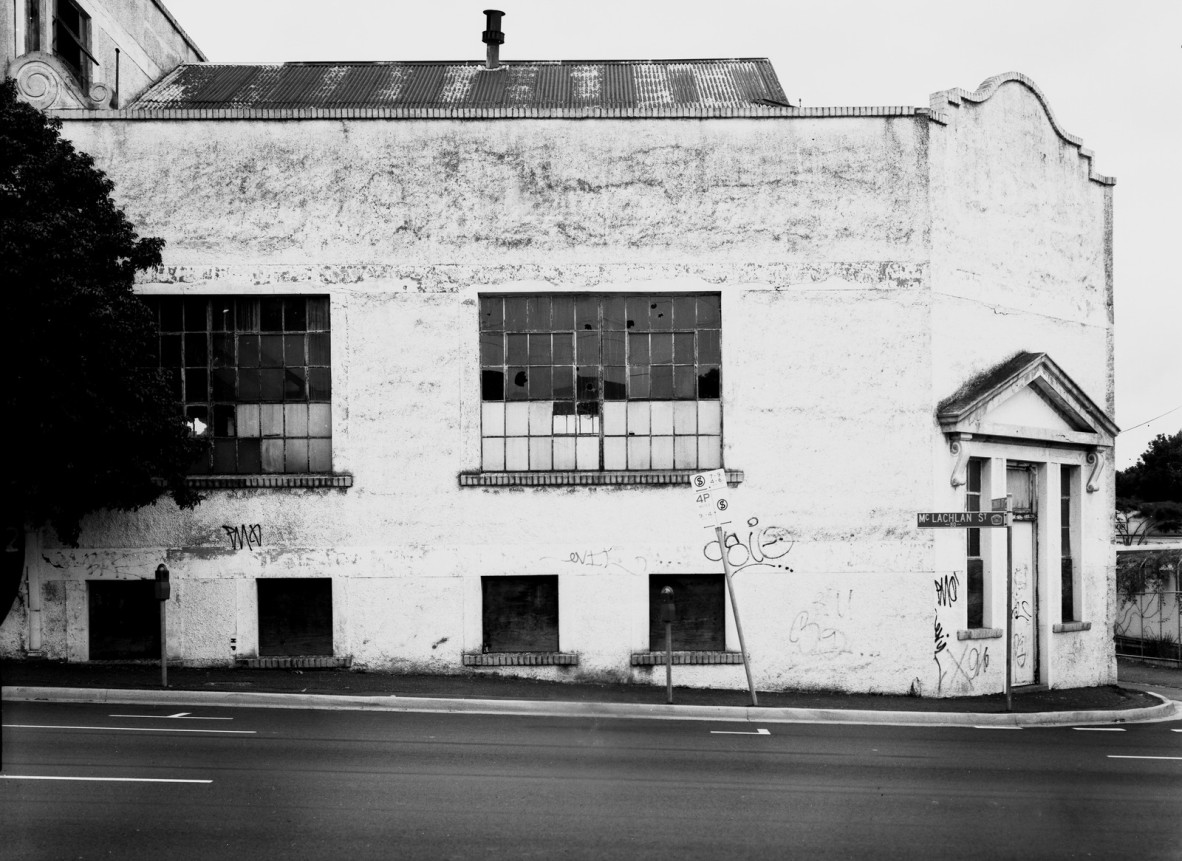
Facade of vacant building, Fortitude Valley, Brisbane, Queensland, ca. 1991-1994. Photographer: Peter Fischmann. Peter Fischmann New Farm photographs. John Oxley Library, State Library of Queensland. Image number: 31525-0001-0008
By now Fortitude Valley had become a veritable ghost town, sidelined after the tram network shut down in 1969 and falling into decay after the criminal gangs and corrupt police were forced out following the Fitzgerald Inquiry. Gone were all major department stores, brothels and illegal casinos, left behind were boarded-up shops and empty warehouses. The Valley (as it’s affectionately called by Brisbane locals), still a home for Brisbane’s sub-cultures, was earmarked for an urban renewal project by the city council. However, its so-called seediness was definitely part of its allure for a new generation of disaffected youth.
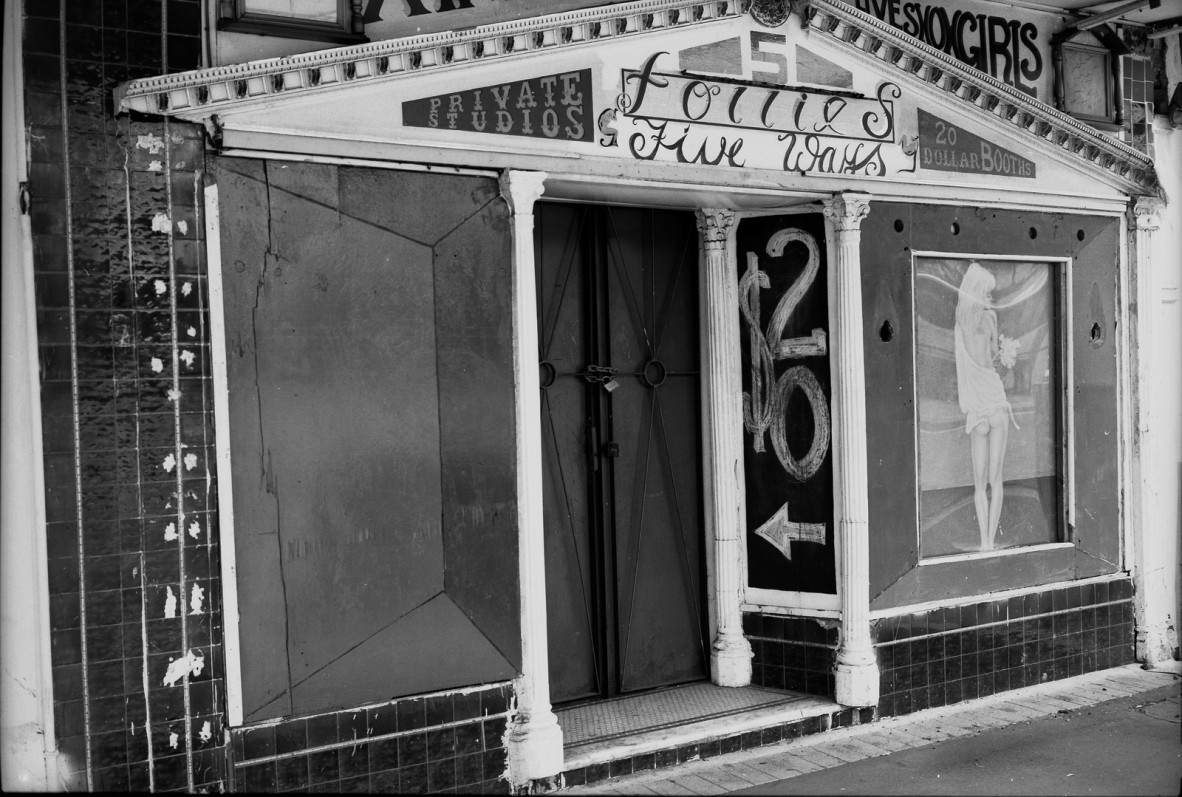
Shopfront for Follies Showgirls nightclub, Fortitude Valley, Brisbane, 1980-1989. Photographer: Peter Fischmann. 31524 Peter Fischmann Brisbane photographs. John Oxley Library, State Library of Queensland. Image number: 31524-0001-0022
Into this social and economic climate, two enterprising young women decided to take advantage of Fortitude Valley’s cheap rents and tap into the federal government’s NEIS (New Enterprise Incentive Scheme) program aimed at helping unemployed people start a new business. Joc Curran, 25, and her friend C. Smith, 23, used the $5,000 to open a new venue in an upstairs warehouse space on Ann Street, not far from iconic gay nightclub, The Beat.
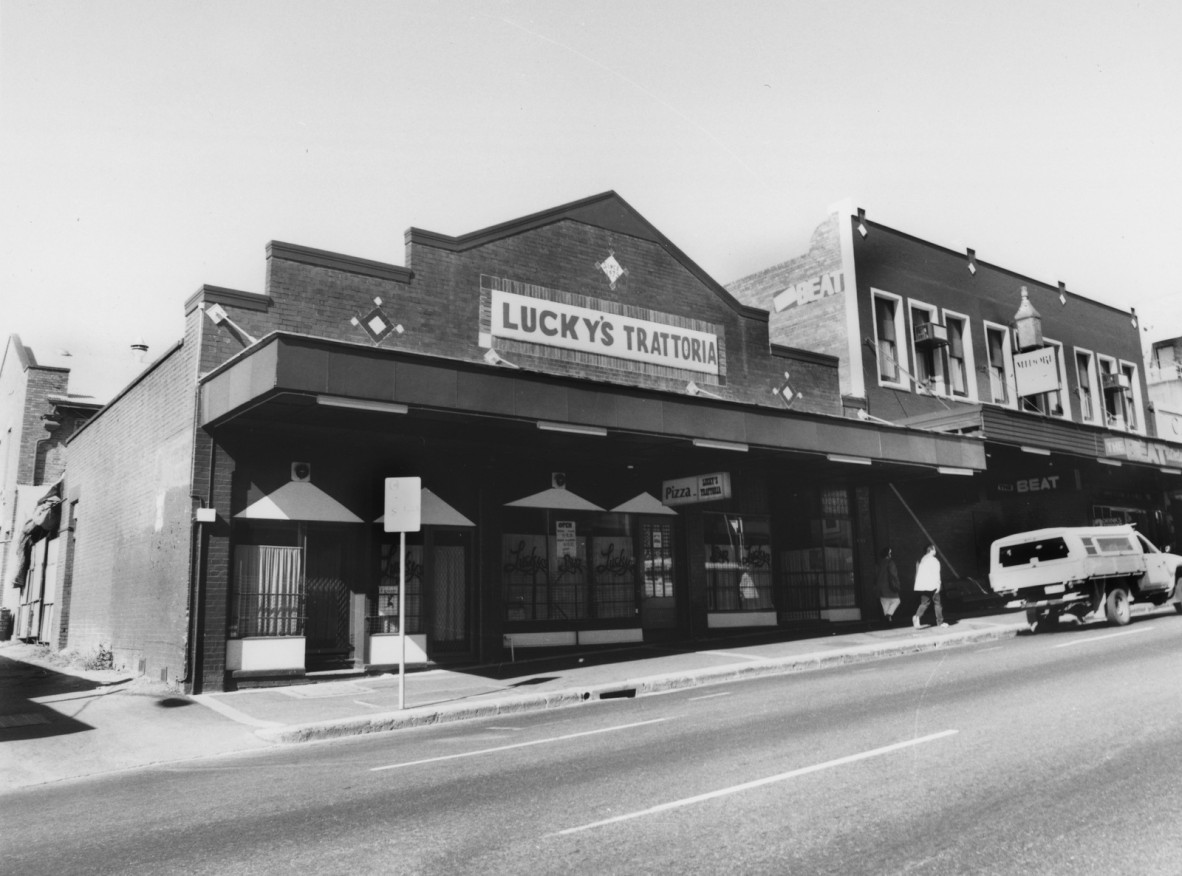
Lucky's Trattoria and the Beat Nightclub in Ann Street, Fortitude Valley, ca. 1994. Photographer: Reina Irmer. John Oxley Library, State Library of Quueensland. Negative number: 99726
These young and daring women had a dream to build a live music venue that celebrated independent music, art and creativity. Curran and Smith started their venture with almost nothing. Anyone who went there in the early days will remember having to buy food (vege curry anyone?) to get an alcoholic drink, the cheapest form of liquor licence. And air conditioning was a distant dream. But punters could get very close to the stage, bringing intimacy to a venue for up to 500 people. This was new territory for locals.
Despite humble beginnings, The Zoo appeared at the perfect time, in the perfect place, to deliver on its core mission of nurturing young local talent. It went on to host many local, national and international bands and musicians, who would often perform ‘secret gigs’ when in town such as the legendary night in 1996 Nick Cave joined the Dirty Three onstage, or when The Pixies did an intimate warm-up show before headlining Splendour in the Grass in 2010. Just as importantly, it nurtured almost every Brisbane band to make it to the national stage. The Zoo was that kind of place – warm, open, welcoming. It changed the musical landscape of Brisbane, and Australia by association, at the vanguard of The Valley’s renaissance as the live music heart of Brisbane. Although neither Joc or C. are involved anymore, it still a much-loved Brisbane music institution, 30 years later.
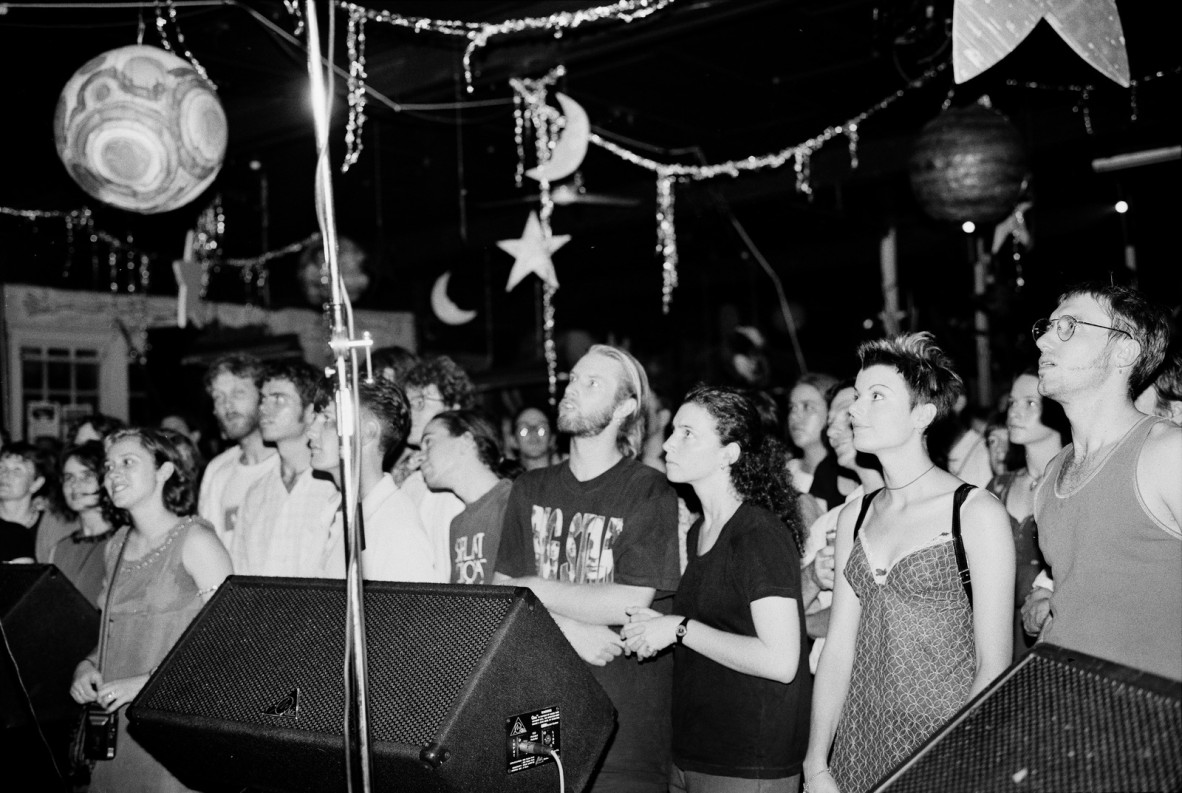
Audience watching The Go-Betweens perform at the Zoo in Fortitude Valley Queensland 1995. Photographer: Peter Fischmann. 27510 Peter Fischmann Photographs. John Oxley Library, State Library of Queensland. Image number: 27510-0001-0005
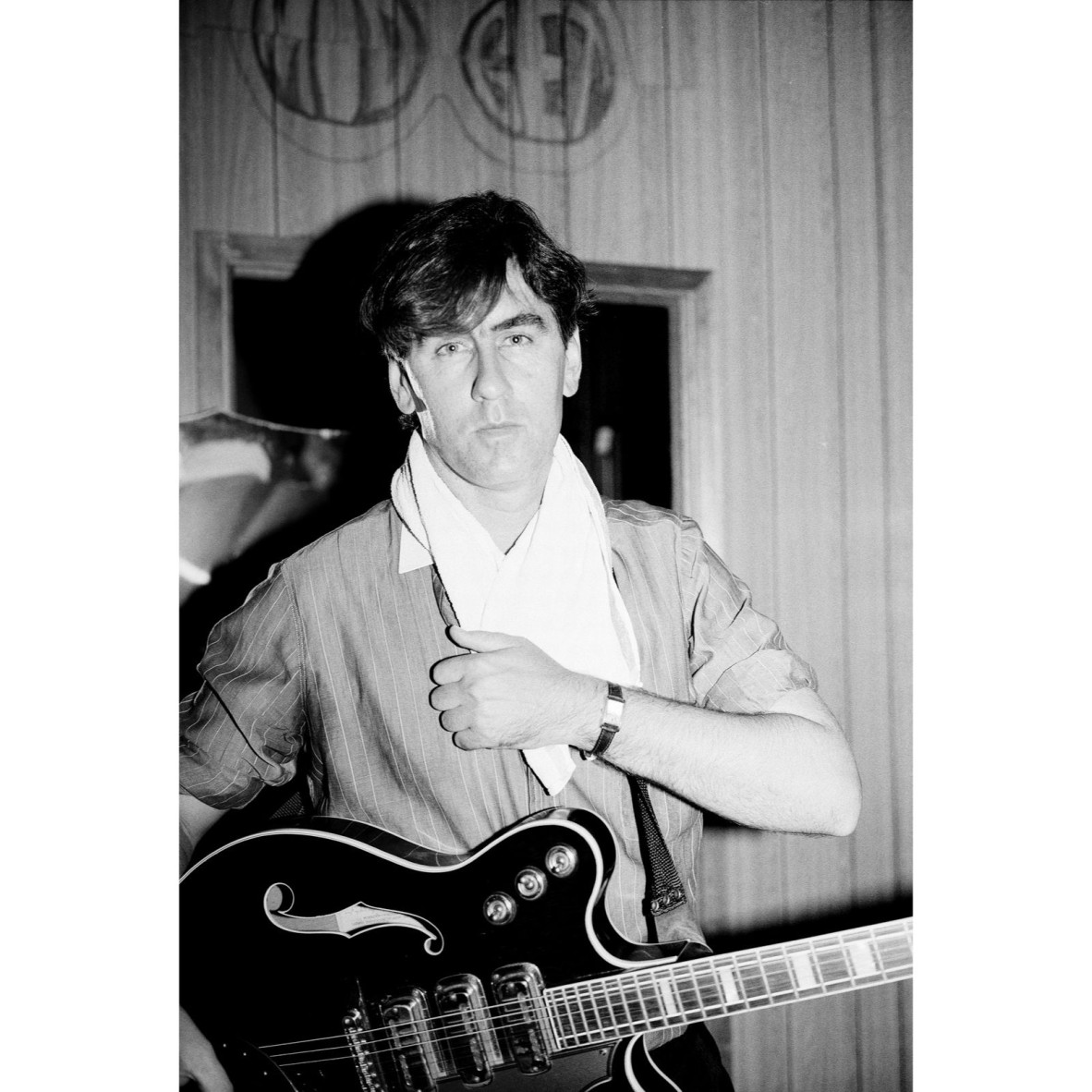
Robert Forster at the Zoo Nightclub in Brisbane 1995. Photographer: Peter Fischmann. 27510 Peter Fischmann Photographs. John Oxley Library, State Library of Queensland. Image number: 27510-0001-0003
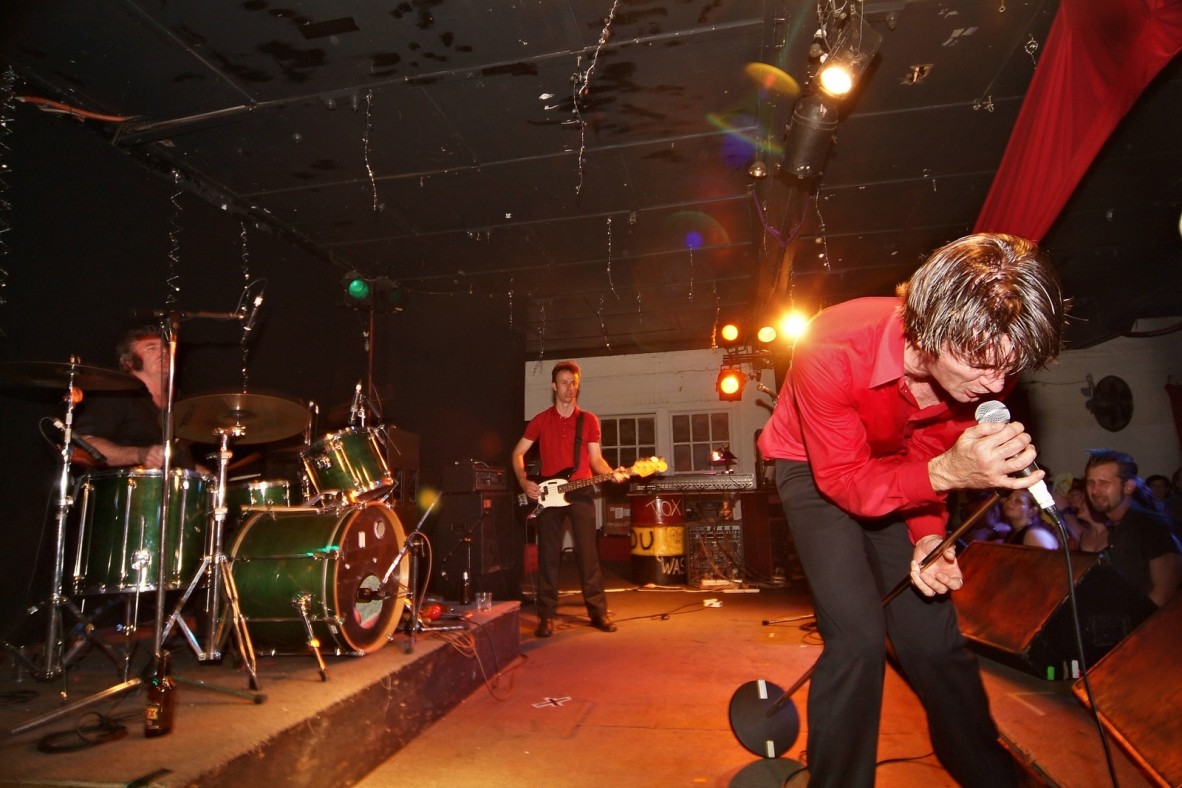
Performers on stage The Zoo, Fortitude Valley (0013-0002), ca. 2004-2010. Photographer: Mick Richards. 29173 Mick Richards Music Photographs. John Oxley Library, State Library of Queensland. Image number: 29173-0013-0002
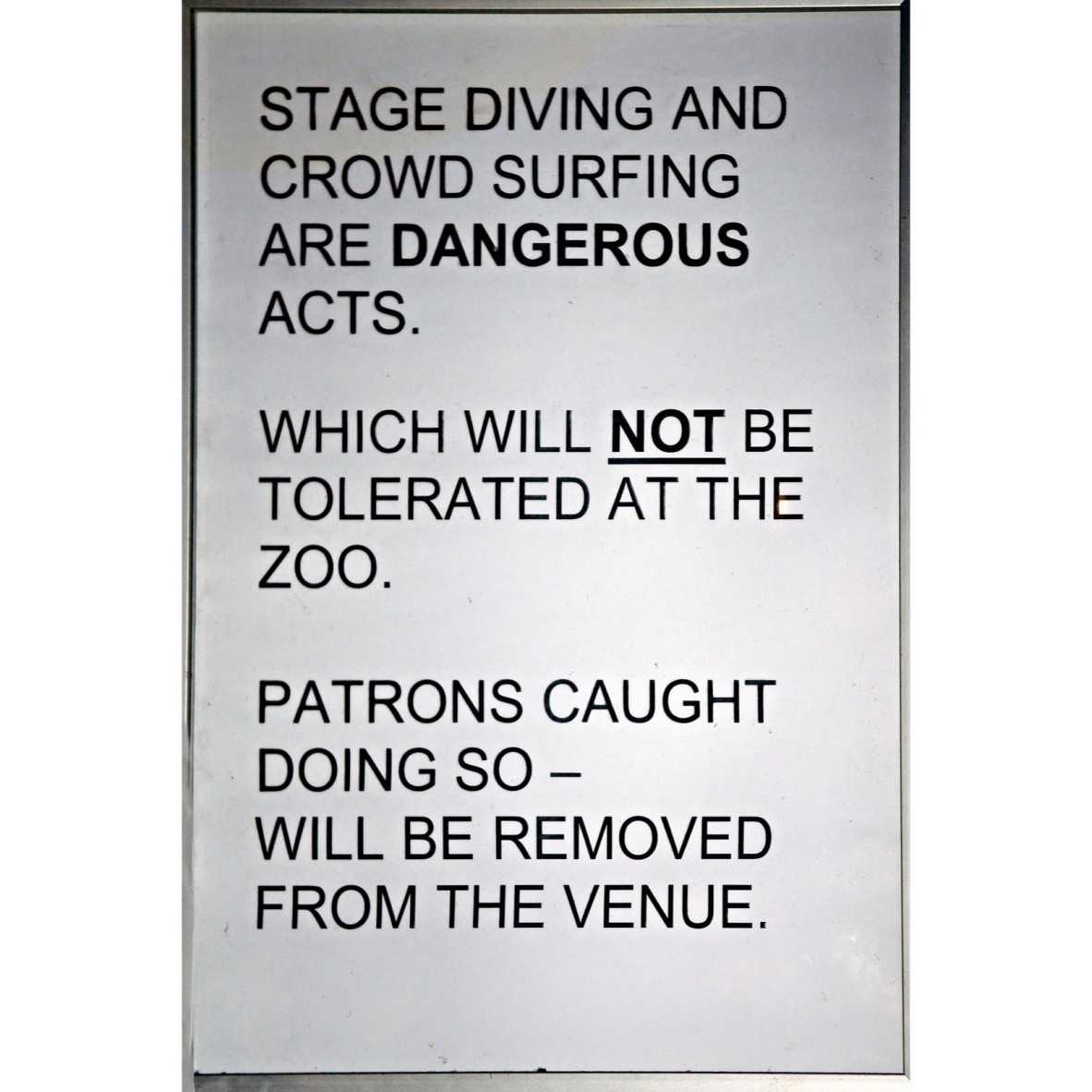
Sign prohibiting stage diving at The Zoo, Fortitude Valley, ca. 2004-2010. Photographer: Mick Richards. 29173 Mick Richards Music Photographs. John Oxley Library, State Library of Queensland.
Image number: 29173-0013-0001
Anna Thurgood, State Library of Queensland
Further reading:
Comments
Your email address will not be published.
We welcome relevant, respectful comments.